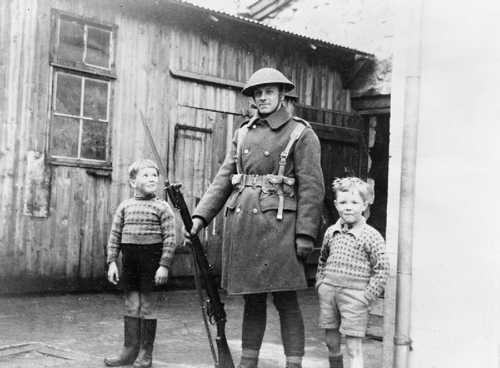
British Forces
Guarding the Faroe Islands.
H.M. Government/Imperial War Museum (collection).
Faroese boys join a British sentry on duty in the Faroese capital, Tórshavn, 1940. Depending on the exact date (a little unclear), the sentry may be either a Royal Marine or a British Army soldier. The British moved to occupy the Faroe Islands - at the time, a county of the Kingdom of Denmark - immediately after the surrender of that Kingdom to Germany. This was a strategic necessity in view of the strategic position of the Islands in the North Atlantic. While the position of the British occupiers in relation to the local authorities were, in theory, problematic - the local authorities felt themselves unable to deal with the British formally on behalf of the King of Denmark, who was still residing in Denmark under German occupation - and the local assembly did issue a formal protest against British occupation, in practice relations were very friendly. The British allowed the Faroese Assembly (the Logting) and its officers to exercise self-government in all purely domestic matters for the duration of their stay (to September, 1945). One result of this was an appetite for the establishment of Faroese home rule or independence. Home rule was established in 1948, at which time the Faroes became virtually autonomous under the Danish Crown. The question of possible full independence remains a live one in Faroese politics. Best regards, JR.
2666 Views
3/30/2012
